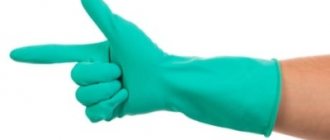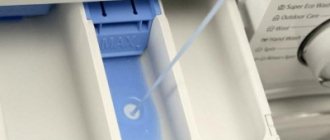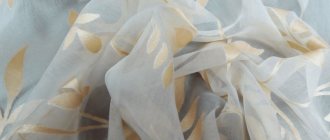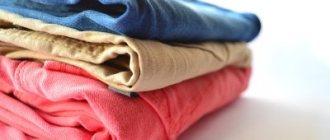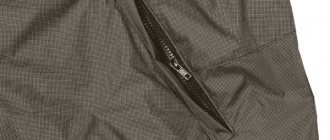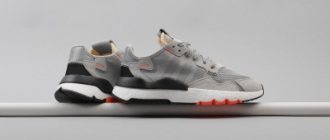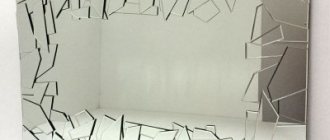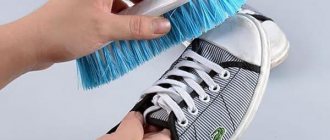A cocoon-nest is a cozy space, an orthopedic mini-mattress that follows the anatomical shape of a newborn baby’s body.
Its design allows the baby to feel in the crib as if in the womb. A cocoon is made from foam rubber, holofiber or other filler, which is covered with fabric.
Like any other thing, the nest needs regular washing. This procedure has a number of features that parents should know.
We will tell you in the article how to wash a cocoon-nest for a newborn in a machine and by hand.
How to wash baby bumpers in a washing machine?
When washing in a washing machine, select a delicate or hand wash cycle with a minimum spin speed. If you wash by hand, pay special attention to rinsing. When rinsing in a washing machine, you can use baby fabric softener. Choose a hypoallergenic, unscented product.
Interesting materials:
How to boot into safe mode? How to log into jmail? How to access a channel on YouTube? How to enter Advanced BIOS? How to enter the BIOS on Acer Nitro 5? How to enter BIOS on Dell Inspiron 15? How to enter bios on hp 250 g6? How to enter BIOS from Lenovo? How to access the Dell Boot Menu? How to access device manager without a keyboard?
Is it possible?
The nest cocoon can be washed both in a machine and by hand. Before starting the procedure, it is necessary to clarify what material is used as filler .
This information must be indicated on the product label. It also contains information about the rules for caring for a specific mattress.
Parents need to pay attention to the following points:
- if only the removable cover is dirty, wash it separately;
high-quality products are sewn from cotton fabric that is not afraid of high temperatures, they can even be boiled;- synthetic covers are treated in water up to 60 degrees;
- You need to wash the entire cocoon once a month to clean it of dust;
- Before you start washing, the product must be checked for integrity;
- if there are holes or loose seams, they need to be sewn up;
- be sure to knock the dust out of the mattress - it’s better to do this outside or on the balcony;
- foam cocoons can only be washed by hand;
- nests filled with synthetic fluff or holofiber tolerate automatic processing well.
Machine wash is quite aggressive.
Therefore, inexpensive foam rubber products can become deformed. Hand washing is gentle, but labor-intensive. A wet mattress weighs 2-3 times more. Therefore, it will be difficult for a young mother to cope with the task alone. There is no need to wash the cocoon after purchase. It is enough to steam it for 7 minutes. There is no need to press the soleplate of the iron onto the product.
Manually
Hand wash suitable for nests with foam filling.
Procedure:
- Fill a large basin or bathtub with warm water and dilute the detergent in it. You can use either a soap solution or any other composition that is usually used for washing children's clothes (Stork, Umka, Our Mother, Eared Nanny, etc.).
Soak the cocoon in the solution, completely immersing it in water.- Leave the product to soak for 30-60 minutes.
- Use a soft brush to clean off any existing dirt, then carefully walk over the entire surface of the mattress.
- Drain the water and rinse the product thoroughly. For convenience, you can use the shower.
- Allow the water to drain without removing the mattress from the bath. You can gently shake it with your hands, but do not twist it.
- Send the cocoon to dry.
The water should be warm, but not hot, no higher than 40 degrees. Temperature changes should not be allowed to prevent the fabric from stretching and the product losing its shape.
How to sew a cocoon for newborns with your own hands
A do-it-yourself cocoon for newborns is the pleasant care of loving mothers. The main task of parents is to provide their baby with comfortable conditions from the first days of life. Considering how much newborns sleep, mothers first try to resolve the issue of choosing the most optimal sleeping place option. From birth to 4-6 months, pediatricians recommend using a cocoon nest.
Cocoon design features: security and soft adaptation
The idea of helping newborns get used to new living conditions was embodied in a cocoon for babies. This useful device of an unusual configuration is as comfortable and cozy as a mother’s tummy. Having barely been born, the baby is not ready for open spaces and feels comfortable only in a familiar environment.
As planned, the cocoon is made in such a way that the child constantly feels something soft around him. The rounded sides of the cocoon envelop the baby from all sides. In such comfortable close quarters, the baby feels protected, which has a beneficial effect on his development.
It is important that the nest meets the basic requirements for children's products.
Important Tips
wash a cocoon for newborns efficiently :
use detergents that are suitable for washing children's clothes, they have a lower concentration of surfactants, and also contain a minimum amount of fragrances and fragrances;- turn on the additional rinse mode - this will completely wash out the powder particles from the fabric fibers;
- wash the cocoon separately from other things;
- eliminate intense friction of the material to prevent its damage;
- wash the cocoon as it gets dirty;
- for preventive purposes, the product is treated once a month;
- iron the cocoon using the steam function.
Myth 25. You need to sleep at night
At night you need to not only sleep, but also breastfeed.
Most newborn babies are designed in such a way that they sleep from 10-11 pm until 3-4 am, then they begin to wake up and ask for the breast. A child in the first month of life will latch on in the early morning hours (from 3 to 4-6 usually. Night feedings with properly organized breastfeeding look something like this: the baby is worried, the mother puts him to the breast, the baby sleeps while sucking and the mother also sleeps, after which -then he lets go of the breast and continues to sleep more soundly. And such episodes happen 4-6 per night. All this is easy to organize if the mother sleeps with her child, and for this she needs to be able to feed while lying down in a comfortable position.
If a child sleeps separately from his mother, in his own crib, then he stops waking up for morning feedings, sometimes already a week after birth, sometimes by 1.5-2 months. Most modern mothers perceive this with relief, because... for them, the nightly running back and forth, nodding while sitting in a chair or on a bed over a sucking baby, and some also pumped at night were finally over... And here a pitfall awaits them called insufficient stimulation of prolactin and, as a result, a decrease in the amount of milk .
A mother and her child are a wonderful self-regulating system. While the baby begins to need to nurse in the morning, his mother produces the maximum amount of prolactin, from about 3 to 8 am.
Prolactin is always present in the female body in small quantities; its concentration in the blood increases significantly after the child begins to suckle at the breast; most of it is obtained in the morning hours from 3 to 8 am. Prolactin, which appears in the morning, produces milk during the day. It turns out that whoever sucks at night stimulates his mother’s prolactin and provides himself with a decent amount of milk during the day. And whoever fails to suckle at night can quickly be left without milk during the day.
No mammal takes a night break from feeding its babies.
Do I need to process it immediately after purchase?
New diapers must be washed. There are several reasons for such actions:
- on a new product there are always particles of starch (added during production to give a better presentation), dust, and dyes;
- the diapers were lying in a warehouse, passing through a large number of people (cutters, seamstresses, loaders, sellers).
Read more about why and what items should be washed after purchase here.
The first wash is best done by hand. Algorithm of actions:
- Dissolve two or three tablespoons of liquid baby soap (or grated laundry soap) in a bowl of warm water.
- The diapers are soaked in the resulting solution for ten minutes.
- Afterwards, rub the fabric thoroughly with your hands.
- Washed items are rinsed in clean, cool water at least two to three times.
- Clean diapers are hung out to dry in the fresh air.
- Dried items are ironed on both sides (the temperature is set depending on the type of fabric) and placed in a closet (chest drawer) for storage.
Start over
Cocoons began to be created in France in the form of mattresses for premature or weakened children, and babies with underweight. The product helped create comfortable conditions for the little ones and facilitate their adaptation to the external environment. Over time, they entered the lives of ordinary children.
The purpose of the product depends on its type. For example:
- Cocoon nest for newborns – creates comfortable conditions for sleep, has a physiological basis, and therefore promotes correct body position.
- Envelope - used for outdoors or staying at home in cold weather.
- Diapers - cocoons - replace tight swaddling; the baby's arms and legs are pressed to the body, so they will not scare him.
- Carriers – these products are equipped with handles and a rigid frame and are used only for carrying babies.
The advantages of each include ease of use, creating comfortable conditions for the child, improving his sleep, and giving him a sense of security. Today, all of the listed types of products are classified as cocoons, but nests appeared first. Let's talk about them in more detail.
Cocoon-nest for babies: master class
Now there are many devices on the market that make caring for a newborn baby easier. One of these is a cocoon or nest (English: babynest). But its cost may not be acceptable to everyone. Therefore, we offer you a simple and quick master class in which you can sew a cocoon for newborns with your own hands, spending a minimum of money and time.
An example of a cocoon-nest.
What is a cocoon and why is it needed?
The cocoon is a kind of oval-shaped nest with a mattress and limiting sides that prevent the baby from falling out. They are called nests because of their external resemblance. Such products are used for babies from birth to four months of age.
Advantages of a nest cocoon:
- comfort and peace of mind for the baby in the first months of adaptation to the new world;
- safety, which means the opportunity to leave the child for a short time without worrying;
- the possibility of placing parents in the bed, which means safe co-sleeping.
The sides reliably protect the baby not only from the risk of falls, but also from drafts. You can install the nest on any stable horizontal surface - in a crib, playpen, parent's bed. You can even place it on your lap while watching a movie. The cocoon can also be used for feeding. The use of the nest is not limited in time.
Preparing for washing
Before you send your diapers for washing, you need to prepare them properly:
- Thoroughly clean the fabric from any remaining food and feces.
- Sort diapers by color and type of material.
- Remove difficult, old stains.
Do not allow large amounts of dirty laundry to accumulate. The optimal washing mode is once a day.
Cleaning up baby feces
It is impossible to achieve an ideal result of cleanliness if the soiled diaper is not wiped down first.
If the fabric is stained with urine, wash it under running cool water, washing away traces of urine with laundry soap.
If the diaper is soiled with feces, then it is pre-washed, following a certain sequence of actions:
- The fabric is moistened with water, and the stain is washed with laundry soap.
- After five to ten minutes, the product is rinsed under running warm water and sent to the main wash.
The procedure for sewing a cocoon for a newborn
To care for a newborn, parents have to purchase a lot of things, the main purpose of which is to simplify the process of caring for the baby. These include a cocoon for newborns.
Cocoon-nest
A children's cocoon is essentially an orthopedic mattress that follows the shape of the child's body. Its design is designed in such a way that the baby can be in the same position in which he was in the mother’s womb for nine months.
Today you can buy a variety of cocoons
You can buy a cocoon ready-made, but many nests for newborns are sewn from a pattern. In any case, it is strongly recommended to take care of its availability on the farm.
Experts say that thanks to the cocoon, any baby adapts to the world around him much better and faster and begins to feel comfortable in it.
Diversity
Cocoons are available for sale in a wide variety. Their most general classification is as follows.
· Pillow.
This type can be used from the very first days of a child’s life and not only for sleeping, but also for feeding and playing.
Cocoon pillow - very convenient for use in a crib
· Nest.
The nest in appearance most closely resembles a cradle. When choosing this type of cocoon for newborns, you should purchase modifications with a durable bottom.
Cocoon nest - the most popular option
· Mattress.
The most common variety. Often an anatomical mattress is placed in a crib.
